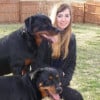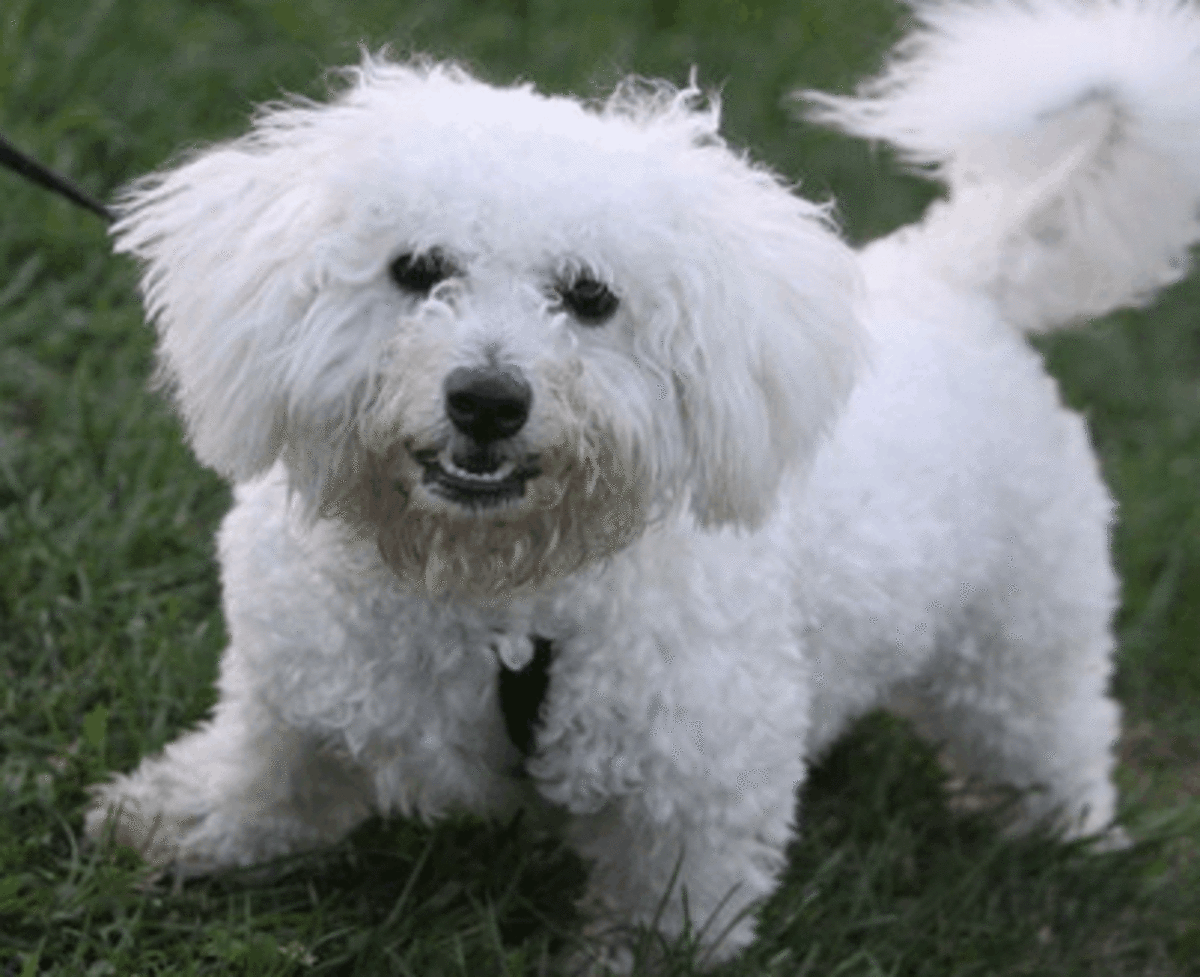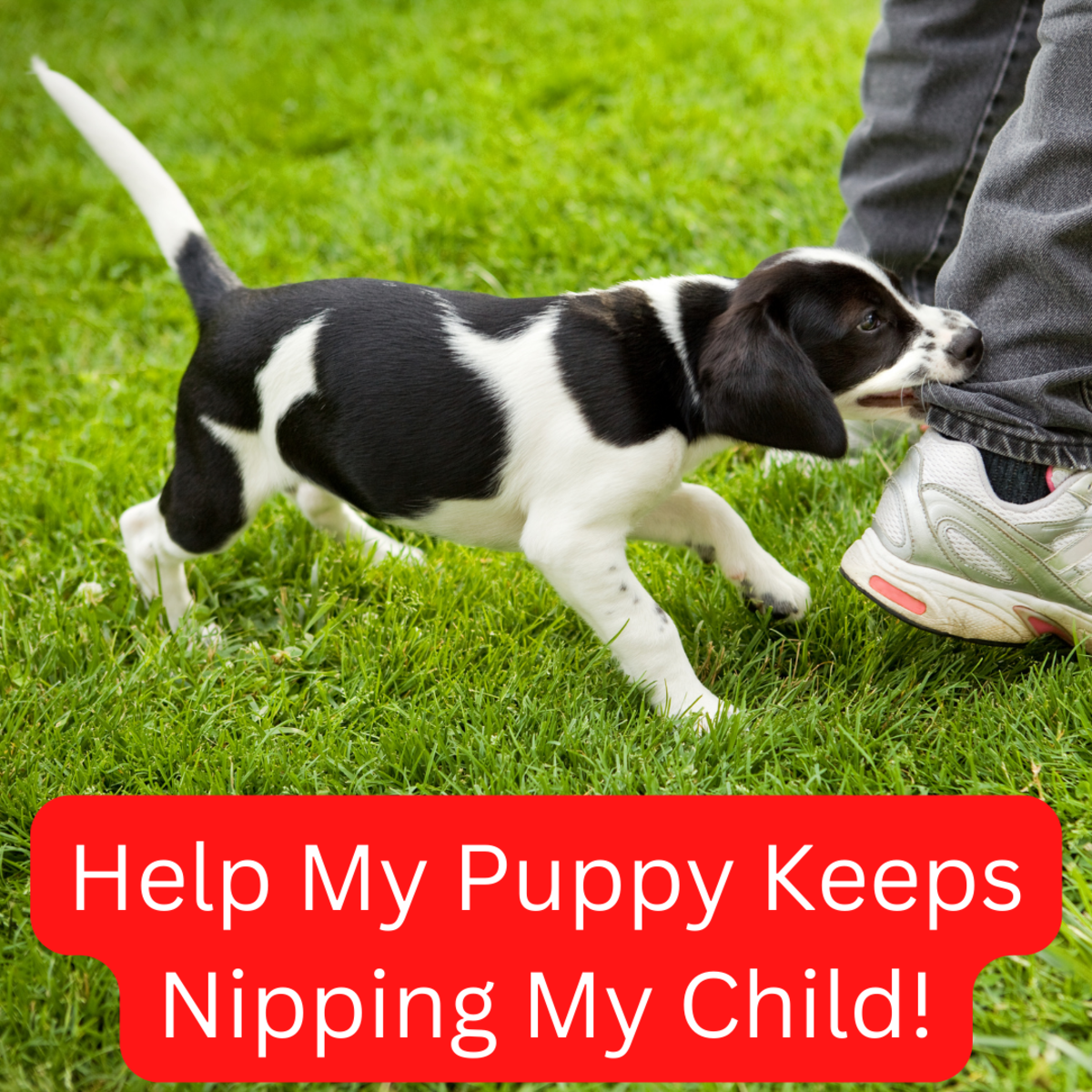Does Your Dog Bite When Frustrated? Here's What to Do

Frustration in dogs may seem like an odd topic, considering that we often associate this emotion with humans.
After all, we usually associate frustration with humans, think “short fuse,” “throwing up your hands in exasperation,” or the inner meltdown when traffic crawls to a standstill or your coworker gets credit for your brilliant idea.
Most of these situations are surely critical enough to cause many people to succumb to feelings of irritation, annoyance and even anger!
Psychologists describe frustration as the emotion deriving from being blocked from reaching a desired outcome. It takes place when we're thwarted for achieving our goals.
Among humans, as described, there are many situations that can trigger frustration, but what about dogs?
Frustration in Dogs: Yes, They Really Do Feel It
Frustration has been described in literature as an emotion that is possible in dogs. Although dogs may not have the cognitive abilities to feel more complex emotions such as guilt, pride, and shame, they can feel a wide arrange of emotions that have been thought to be exclusively felt by humans.
According to Stanley Coren, dogs have the cognitive abilities similar to a human who is around the ages of 2 to 2-and-a-half-years old. This makes dogs capable of experiencing basic emotions such as joy, fear, anger, disgust, and even love.
In it therefore not surprising if dogs can feel frustration. Sure, you won't likely ever find your pooch struggling to open a jar of spaghetti sauce or stuck in traffic, but rest assured, dogs have their own life annoyances to deal with.
Causes of Frustration in Dogs
Frustration in dogs may occur any time they are prevented from carrying out certain instinctive behaviors or when they cannot reach something they desire. Here are some examples of triggers;
- A dog used to feasting on deer poop in the yard, being walked on leash and prevented from engaging in the habit.
- Asking a dog to walk on a leash when he has always been allowed to roam and sniff around for pretty much all its life.
- A delay in feeding meals may cause barking out of frustration.
- Presenting a ball and then hiding it or not tossing it.
- A dog on leash not getting to meet and greet other people and dogs may present with what's known as barrier frustration.
- A dog behind a fence not being able to chase a cat or meet other dogs.
- A dog being placed in a timeout behind a baby gate, door or inside an exercise pen.
- A dog being clicker trained and not receiving enough opportunities for rewards/ making the training too challenging.
- A dog in fearful state being prevented from escaping
- A dog seeing an animal escape up a tree or bury underground
Restraint, confinement, anxiety and unmet needs are therefore all highly frustrating situations which dogs may incur.
How likely and how intense a dog's reaction to these events is, varies based on several factors such as age, past experiences, coping skills and temperament.
The Poster "Child of Frustration:
Biting out of frustration is common among puppies and adolescent dogs who haven't received any training.
The classical poster child of frustration is therefore often a young, adularescent dog who gets frustrated about something when on leash and vents his frustration on the owner. The dog may start by biting the leash and then from their go on to biting the owner's arms and legs.
The biting from a hugely over aroused dog often entails repeated and sustained teeth grabbing which makes it look like the person is being viciously attacked.
Often times, these are the only dogs in the home, versus dogs living with other dogs.
Signs of Frustration in Dogs
Aversive, threatening, anxiety-provoking and overwhelming or confusing situations may cause dogs to build up frustration. As the frustration builds up, dogs may become angered and hyperreactive, Frustrated dogs may exhibit a variety of signs including the following:
- Pacing
- Barking
- Whining
- Growling
- Snapping
- Pulling on leash
- Lunging
- Nipping
- Biting (when biting others around him it becomes a case of redirected aggression)
- Chewing
- Digging
- Engaging in displacement behaviors such as licking, spinning, chasing the tail, scratching an imaginary itch etc.
- Onset of compulsive behaviors (stereotypies)
In this article, we will be specifically going over puppies and dogs who nip and bite out of frustration.

What's The Purpose of Frustration in Dogs?
According to a study conducted by Duncan and Wood-Gush, 1971, when fowl were prevented from accessing their feeder through barriers, this led to aggression to lower ranking individuals, increased pecking at the barrier and stereotyped behaviors.
There are good chances, that frustration evokes persistence which may have ultimately prove helpful in helping an animal succeed and survive. By persisting, it can happen that, by chance, or continued effort, the dog is able to attain what he desired.
For instance, back to the fowl, pecking at the barrier from frustration may eventually lead to the barrier breaking apart. In dogs, lunging out of frustration to go greet other dogs, may lead to the leash slipping out of the owner's hand.
From a child's standpoint, there may be chances that, one day when mom no longer buys the child candy at the store, he may throw a tantrum and mom may buy the candy out of social embarrassment.
Back to dogs, the increase in persistence seen during frustration, what is technically known as an "extinction burst," may lead to the desired outcome, which will reinforce such persistence and make the dog more likely to persist in the future.
It can be said that persistence ultimately pays off. The most persistent animals in the wild are often those who succeed and are able to survive and reproduce.
How to Reduce Frustration Biting in Puppies and Young Dogs
To reduce frustration biting in puppies and young dogs, you will often need a multi-faceted approach, tackling the issue from a variety of angles.
1) Identify Triggers
What triggers exactly your dog's biting? For some dogs, it's seeing other people and dogs, for others it's the boredom that sets in on unstimulating walks, and for some more it's frustration of walking back home.
Write down all circumstances you know that appear to trigger the frustration barking. Recall past events, don't attempt to induce frustration just for the sake of compiling the list.
In this case, let's imagine a dog who bites out of frustration when on leash. The biting may often appear when:
- The dog wants to go in a certain direction and is prevented
- The dog wants is trying to access some food on the ground and is prevented
- The dog sees an animal he would like to chase and is prevented
- The dog wants to meet another dog and id prevented
2) Implement Management
Management entails taking steps to prevent the dog from rehearsing the problematic behavior (biting).
The more a dog rehearses a problematic behavior, the more it puts roots, establishes and becomes habit-forming.
With frustration-based behaviors, when not tackled, we risk the dog getting frustrated earlier and earlier and for smaller reasons.
It's therefore important taking many steps to prevent the dog from being exposed to full-intensity versions of his triggers. In other words, you want to keep your dog under threshold as much as possible.
Management may therefore entail:
- Walking in areas where there are less people and dogs
- Walking at a distance from any tempting items on the ground
- Walking in areas where there is less chance for encountering wildlife
- Walking at a distance from temptations. Make sure to train an emergency U-turn to use as needed.
These measures are in general temporary, at least until the dog is capable of demonstrating better impulse control and frustration tolerance. They can also be implemented for those times when you don't have time to train.
3) Acclimate To a Muzzle
Dogs who bite out of frustration are often in a hyper-aroused state and this often means that they'll bite harder than if they were calmer. You will need to take steps to prevent your dog from potentially hurting you and others around you.
Muzzle training your dog is therefore important so that you have a back-up in case your dog happens to be exposed to a trigger that causes him to go over threshold. Here is guide: how to muzzle train your dog.
Just because your dog wears a muzzle though, doesn't mean you are free to expose him to his triggers. You still will need to avoid full intensity exposures as if he wasn't wearing it.
4) Interrupt the Behavior Early
Learn to recognize the earliest signs of your dog potentially starting to get "revved up" and intervene swiftly. One of my favorite ways to interrupt is to entice the dog into a fun treasure hunt game.
I would therefore toss a handful of treats mixed with kibble to the ground and tell the dog to "go find them!" as I point at them.
The redirection needs to be long and valuable enough so that the dog doesn't go back to biting. Sometimes, I may have to do several reps in a row to get the dog back to baseline.
It's important to interrupt the behavior before it escalates into biting you. If you interrupt the behavior once your dog is nipping you, it will be more difficult to redirect him, and on to of that, you risk establishing a behavior chain which can be difficult to eradicate once stablished.
5) Train Alternate Behaviors
You want to train your dog alternate behaviors to engage in so that you can cue these at the first signs of a potential trigger approaching. When training dogs prone to frustration, it's imperative going very gradually, using an errorless approach and making it extra easy.
You may need to split training into easy steps to prevent frustration.
You will need to train behaviors at fluent level firstly at home, and then gradually move to practicing this in the yard, and then with triggers at a distance. Use higher value treats as you practice outdoors (you'll need foods that make your dog go bonkers for and drool buckets of saliva-I like to use baked calf liver).
If your dog is ever not responsive or reacts, take that as a sign that the level of distraction was too strong or you haven't train the behavior at a fluent enough level. You may need to practice more/ have the trigger at a farther distance/ use higher value treats.
Alternate behavior may consist of having your do several steps of attention heeling (walking next to you looking into your eyes), looking at you in the eyes before you toss several treats on the ground and entice him to "find them!" or doing several U-turns in a row.
Of course, you can train anything you find helps your dog stay focused on you rather than the trigger, however, I have found that behaviors that are stationary (like sit or down) are difficult to implement since dogs struggle staying still when hyper aroused (all that frustrated energy needs to go somewhere!)
6) Avoid Corrections
A dog who bites out of frustration can be a very scary ordeal especially when the dog is large, has little bite inhibition and the biting is challenging is difficult to interrupt.
As tempting as it may be to use corrections under the form of corrective tools (such as prong collars, choke collars shock collars) or physical interventions (pushing the dog down, shoving a hand in the mouth, grabbing the muzzle) these risks adding fuel to the fire, potentially triggering defensive/aggressive responses.
7) Provide More Enrichment
All food should be used for brain games, training and food puzzles. This can help keep the dog mentally stimulated and can help provide an outlet for built-up frustrations.
Impulse control training and frustration tolerance exercises may also help, train these very gradually. Here are 10 impulse control games for dogs.
8) Ensure Enough Sleep
Many dogs get very cranky when they are tired and this makes more prone to getting overstimulated and frustrated. It's very important that puppies and young dog sleep enough. You may need to enforce naps for dogs who have fear of missing out or struggle finding their "off button."
Here are some strategies: how to to help a cranky puppy go to sleep.
9) Enroll in Daycare
This can be an option, but the daycare needs to be one that is very carefully chosen, with preferably dog trainers taking care of the dogs.
Going there a couple of times a week or doing play dates with dogs they get along with, allows them to engage in some types of play they crave.
At the same time, you'll also be able to get some respite considering how frustrating and emotionally draining it is dealing with a dog who bites out of frustration.
10) Teach Relaxation
Catch your dog when he's in a relaxed state and praise and reward that. You can start by having your dog on leash while you sit on the couch. When he sits, praise and give a treat, When he lies down, praise and reward that. Keep randomly praising and rewarding him when he's lying down by placing some treats in between his paws.
Do this as often as needed so that your dog learns that when he's calm, he gets your attention and rewards.
11) Use a Long Tug Toy
This game helps reframing the whole dog-human relationship allowing the dog the opportunity to develop more awareness and a sense of control over what he is doing with his mouth.
Games like Ian Dunbar's Jazz Up and Settle Down using cues such as "take" and drop can help the dog learn how to shut down his arousal.
12) Enlist the Help of a Professional
Some cases can be very difficult to treat. It may be difficult for you to interrupt your dog's behavior, or maybe he bites too hard or you are starting to fear him. You need to make your safety and the safety of others your top priority.
If your dog shows signs of aggression, dog's hesitate to consult with a behavior professional. This is for safety and for correct implementation of behavior modification. Look for a reputable dog behavior professional (board-certified veterinary behaviorist) or a dog trainer with years of behavior consulting under the blet and using force-free methods.
Sometimes, dogs may need medications to be under threshold enough to allow them the opportunity to learn better coping skills.
Some Tricks of the Trade For Frustration-Based Biting on Walks
To Stop Biting You When on Leash
| Why it Works
|
|---|---|
Insert the leash through a PVC pipe
| The pipe keeps your dog at a distance from you
|
Wrap the leash around a tree trunk
| The tree makes it difficult for your dog to reach you
|
Use a chain leash
| Dogs don't like to bite chain
|
Wear tall Wellington boots
| Slippery surface makes them less appealing to chew compared to clothing
|
Wear layers of clothing
| The extra padding protects your body
|
My Personal Experience
An 11 month old black Lab I once got from the shelter that needed deep rehabilitation, showed many frustration-based behaviors. She used to get really, really frustrated when on leash and couldn't go meet and greet another dog or person that she would redirect on me, nipping me non-stop and causing me lots of bruises. If people were to see the scene, they would have thought I was being viciously attacked!
I sometimes struggled and the leash would slip away as I attempted my best to protect myself. She would then try to play hard to catch so all I could do was run away and hope she would follow me (which she eventually did and I got her back home by tossing random treats), but it was very scary because we had a public road nearby and she had received zero training prior to seeing me so calling her was out of question.
Apparently, from her history, she was found wandering rural areas and was never put on a leash before. She must have lived on a farm or escaped and was set free to roam as had this thing of eating bugs (she are crickets and cicadas as if gourmet meals).
I sometimes would break down crying because I felt so overwhelmed by her behavior, and knew she needed help as she was from a kill shelter.
If she returned there this way, her chances for adoption were very slim. However, after the "crisis," I would then get into "proactive mode" and start implementing changes to prevent her getting into the "wild state" and creating some daily goals with small steps.
So with these cases, it's important to use management, positive reinforcement training, impulse control games (starting very easy) and back-up plans to have handy if worse comes to worse.
If your puppy or dog shows signs of potential aggression (lunging, barking, growling, snapping, biting), please consult with a dog behavior professional for direct in-person guidance. Articles, videos, and general information provided online are not meant to replace in-person training/instruction. By using this service, you are waiving any liability claims or other types of claims related to any of your dogs' behaviors against you or others.
© 2025 Adrienne Farricelli CPDT-KA, Dip.CBST








